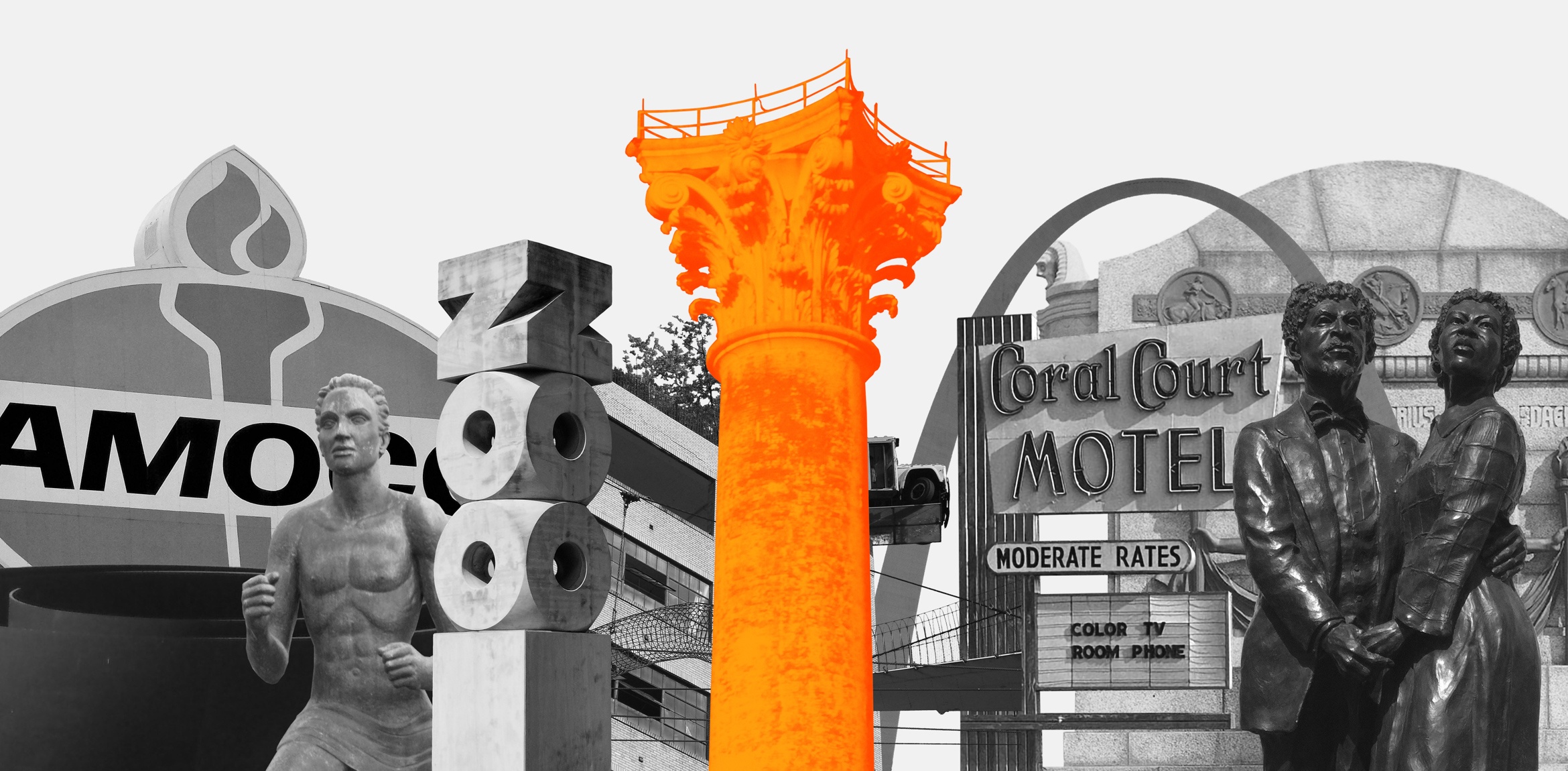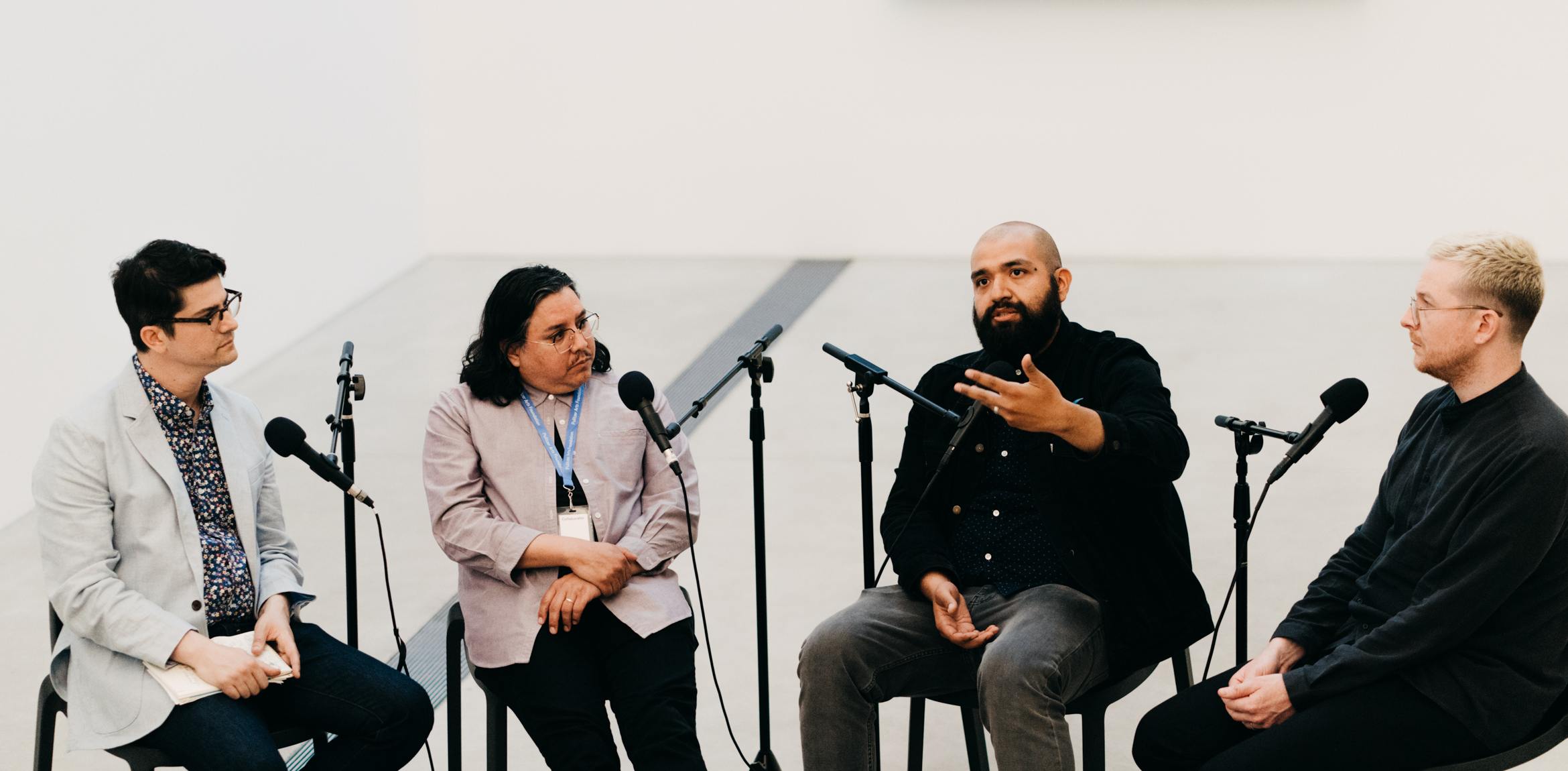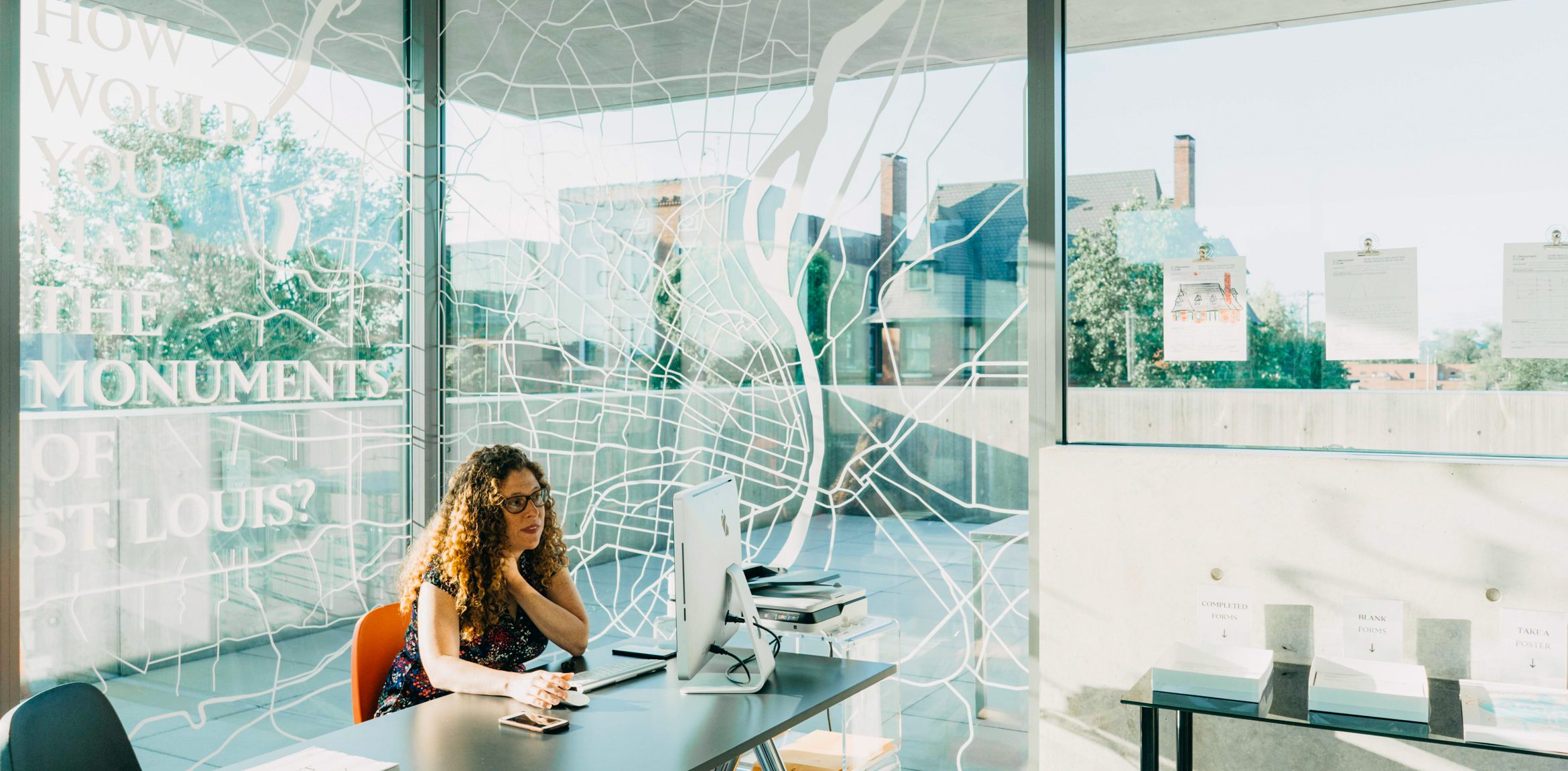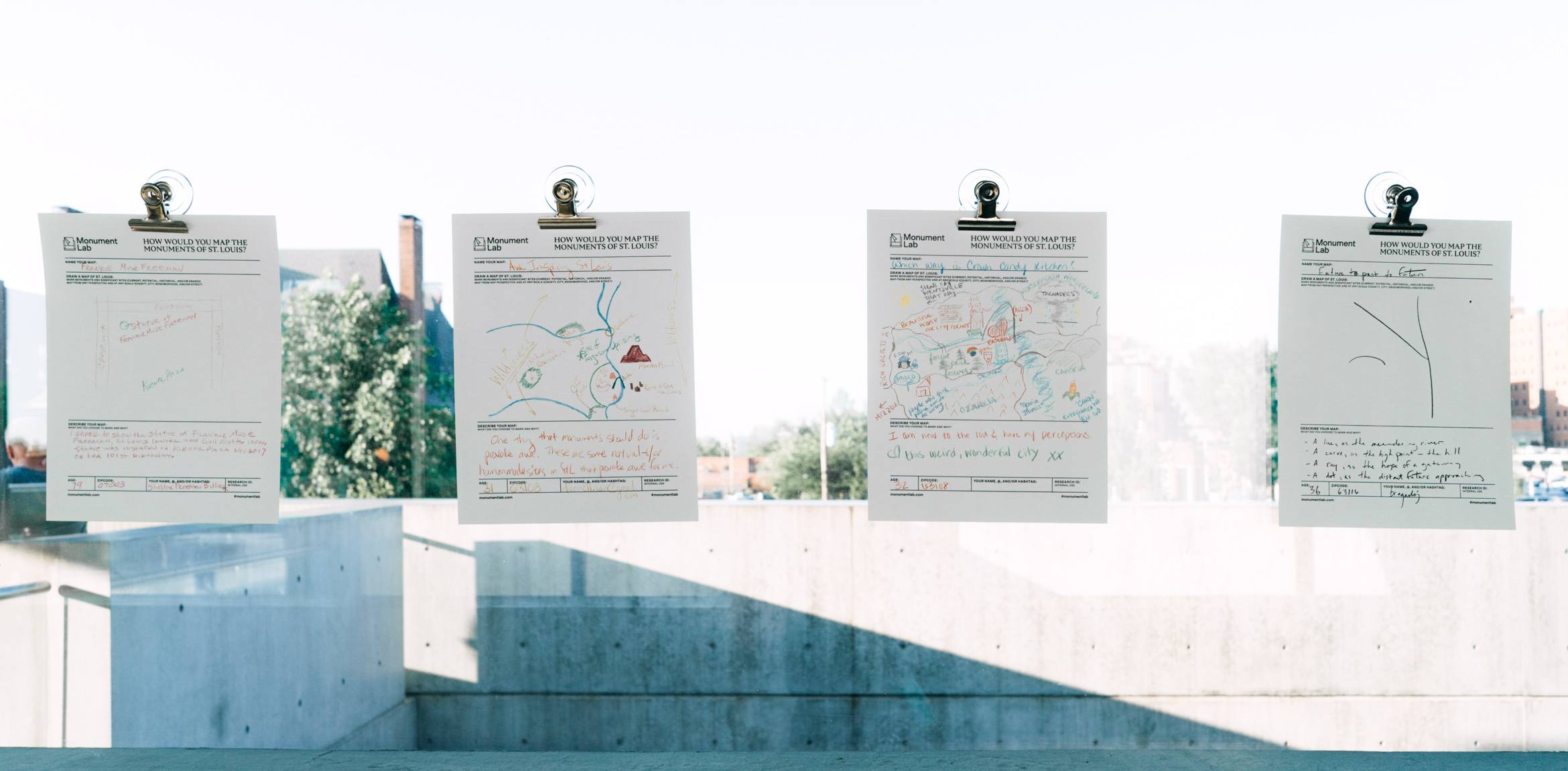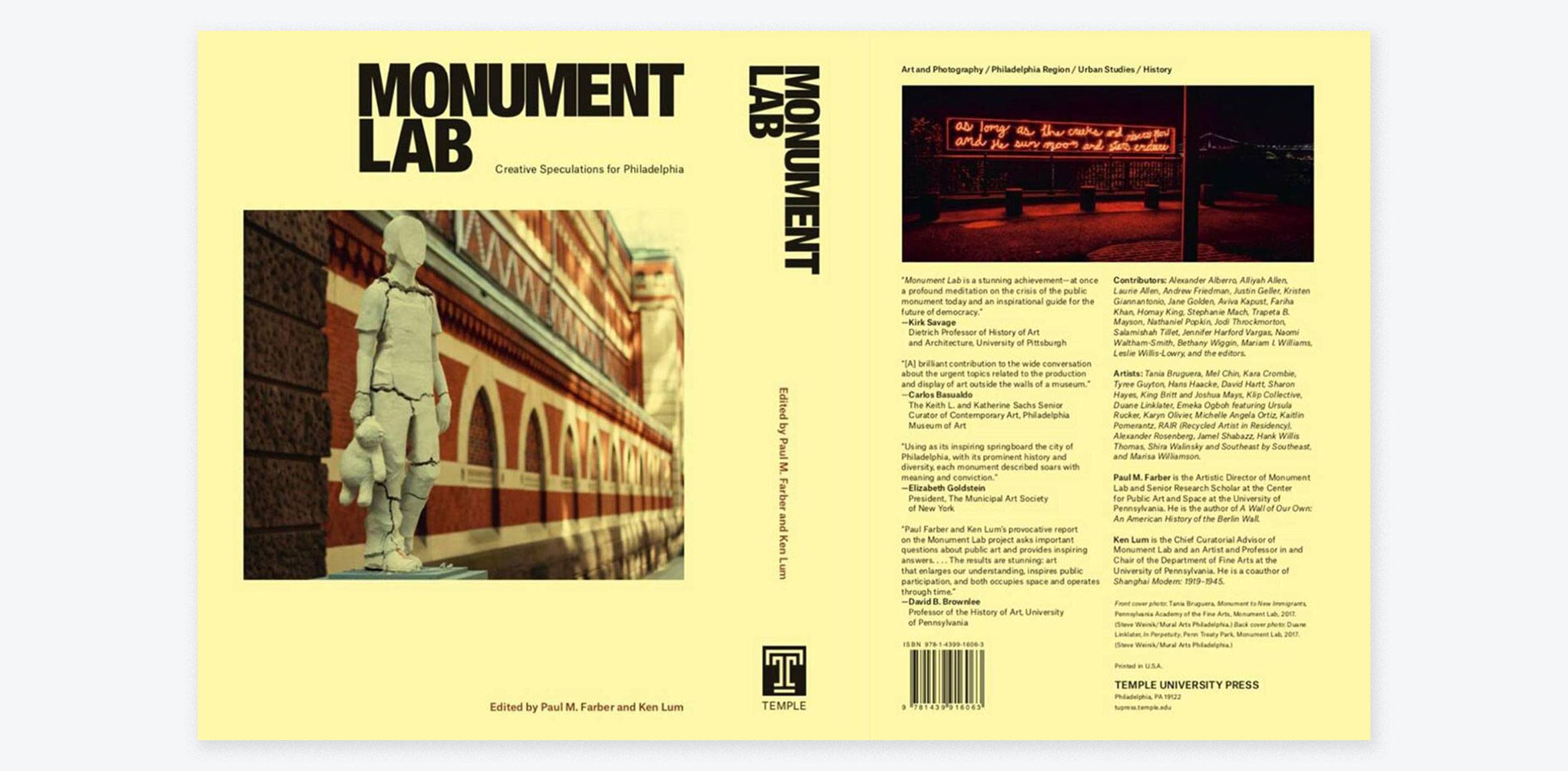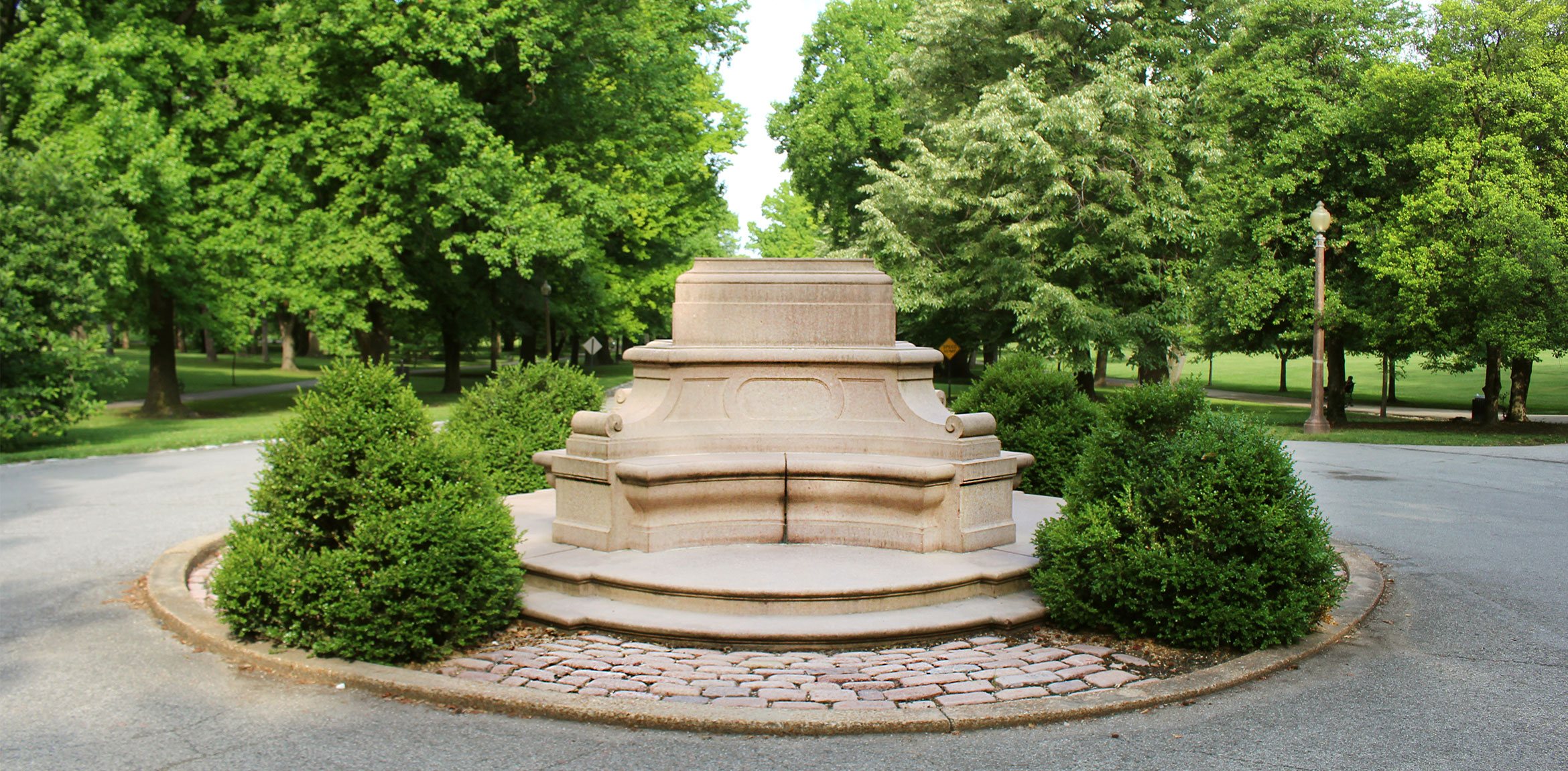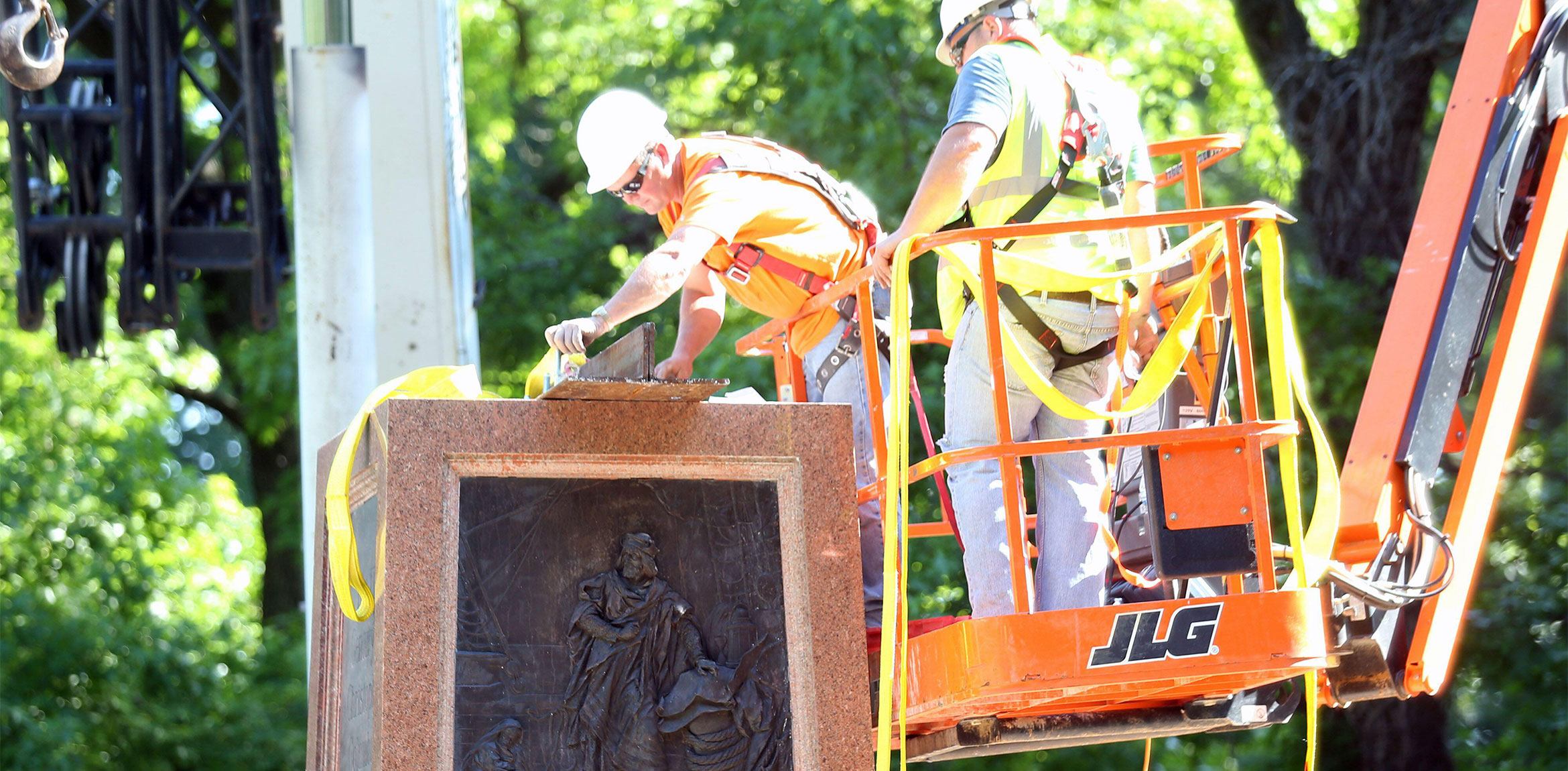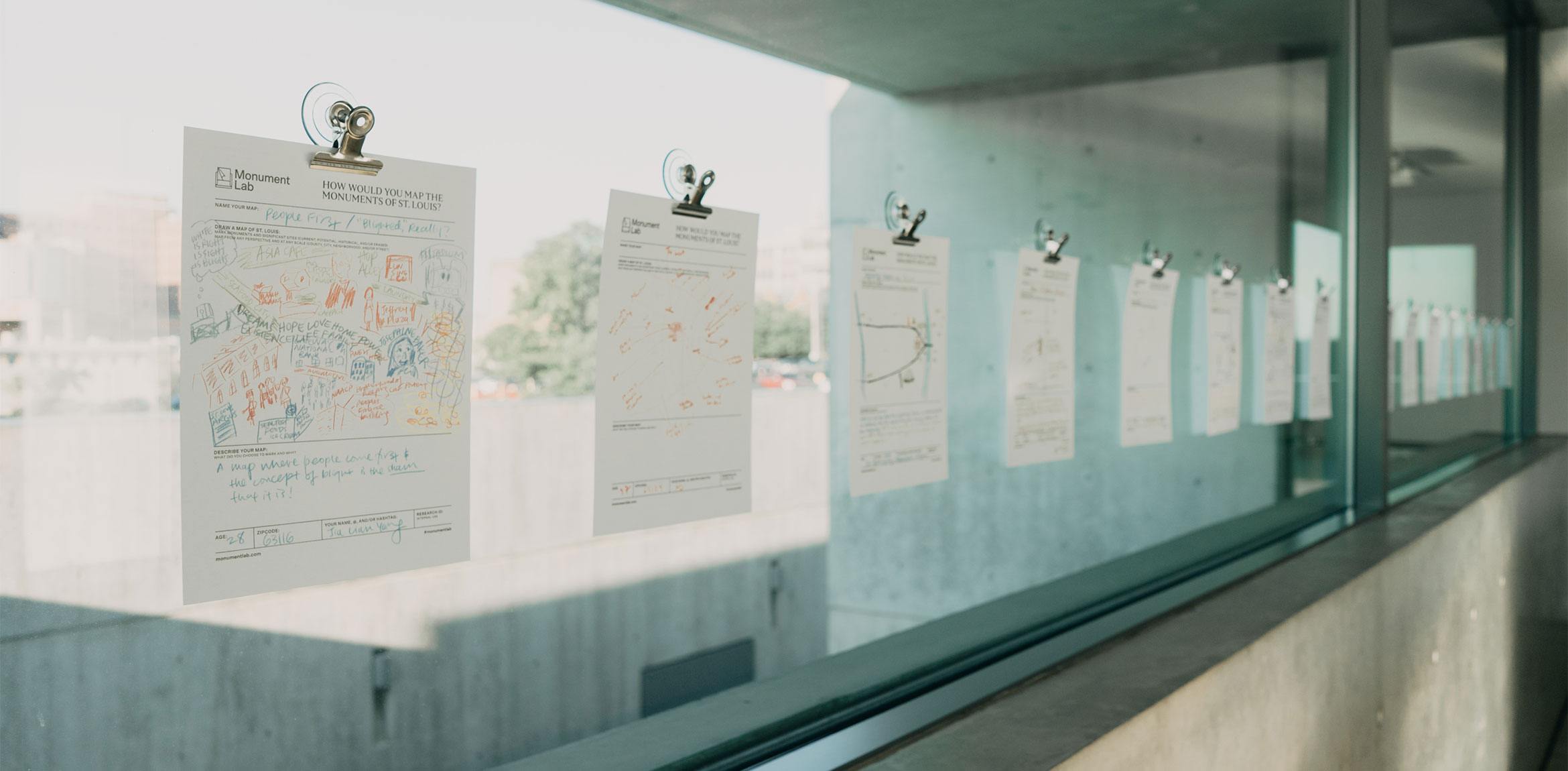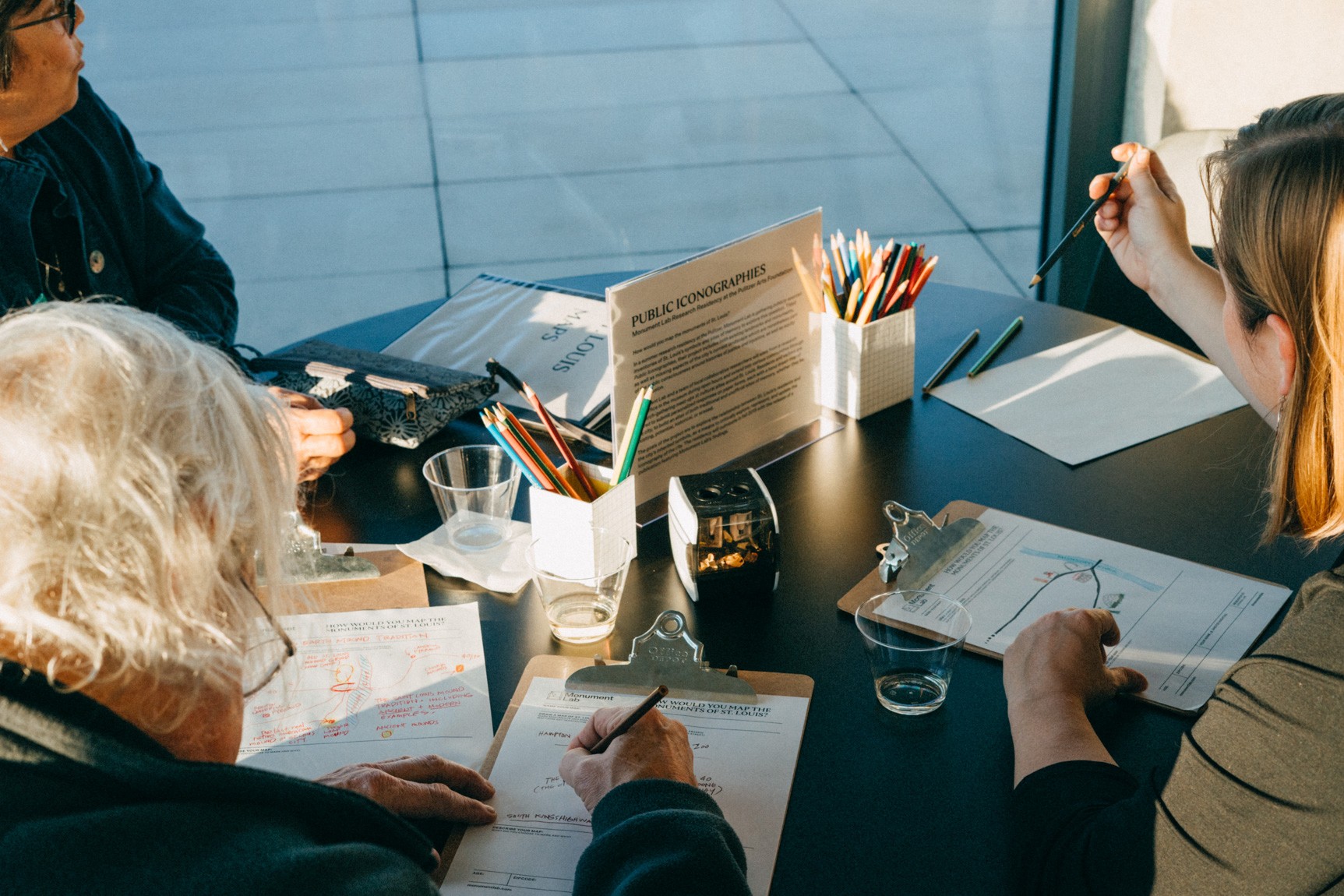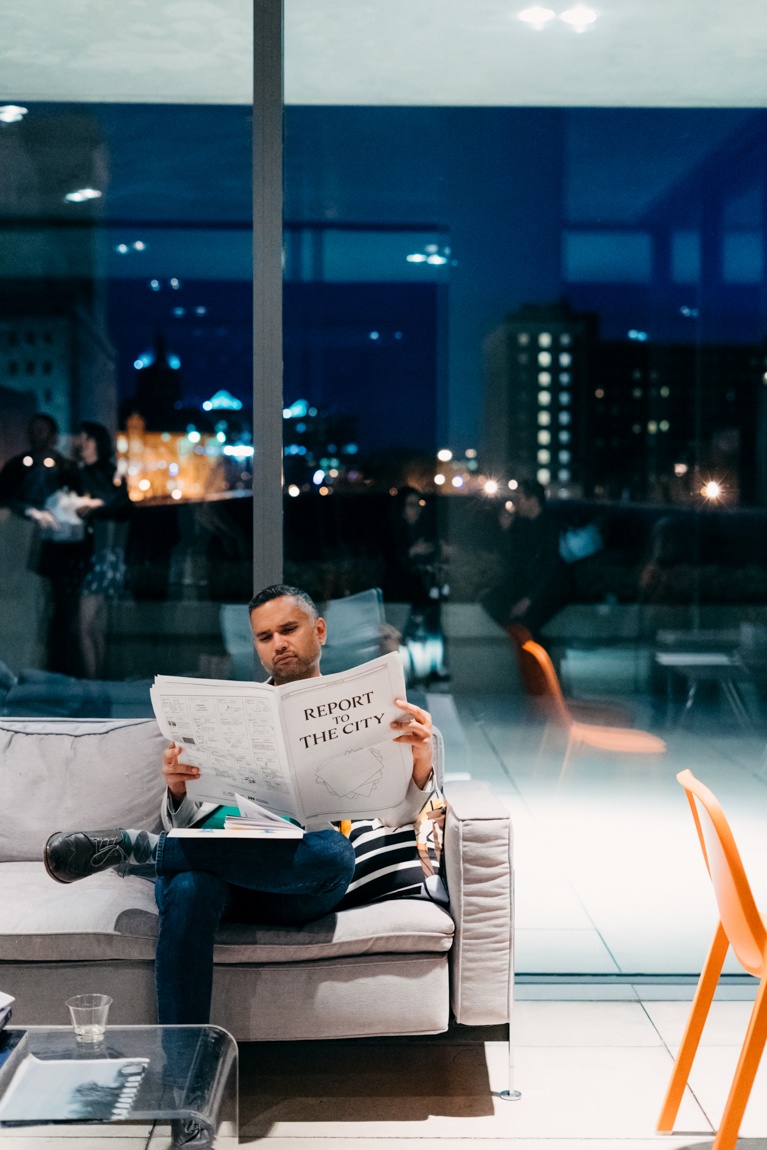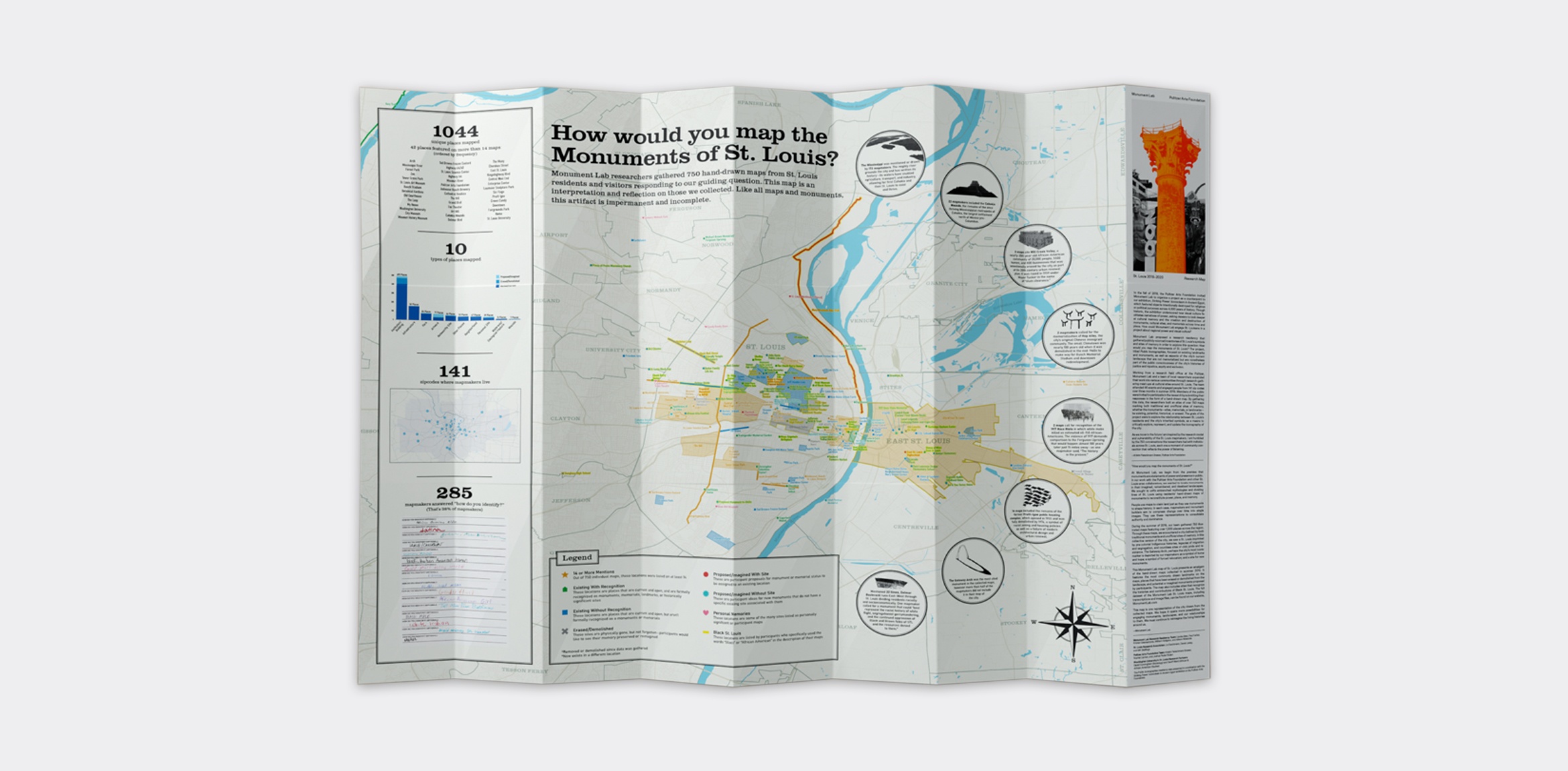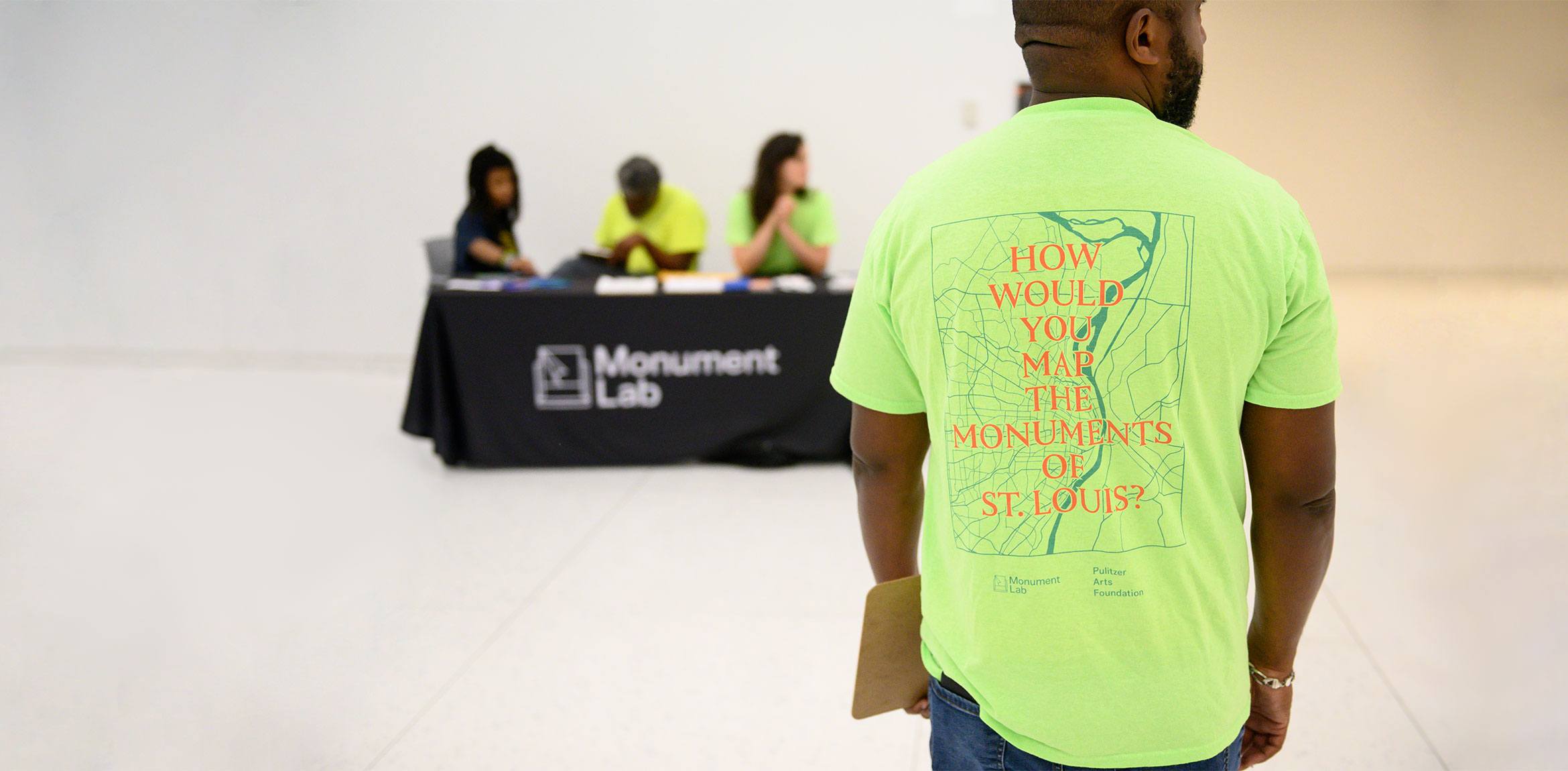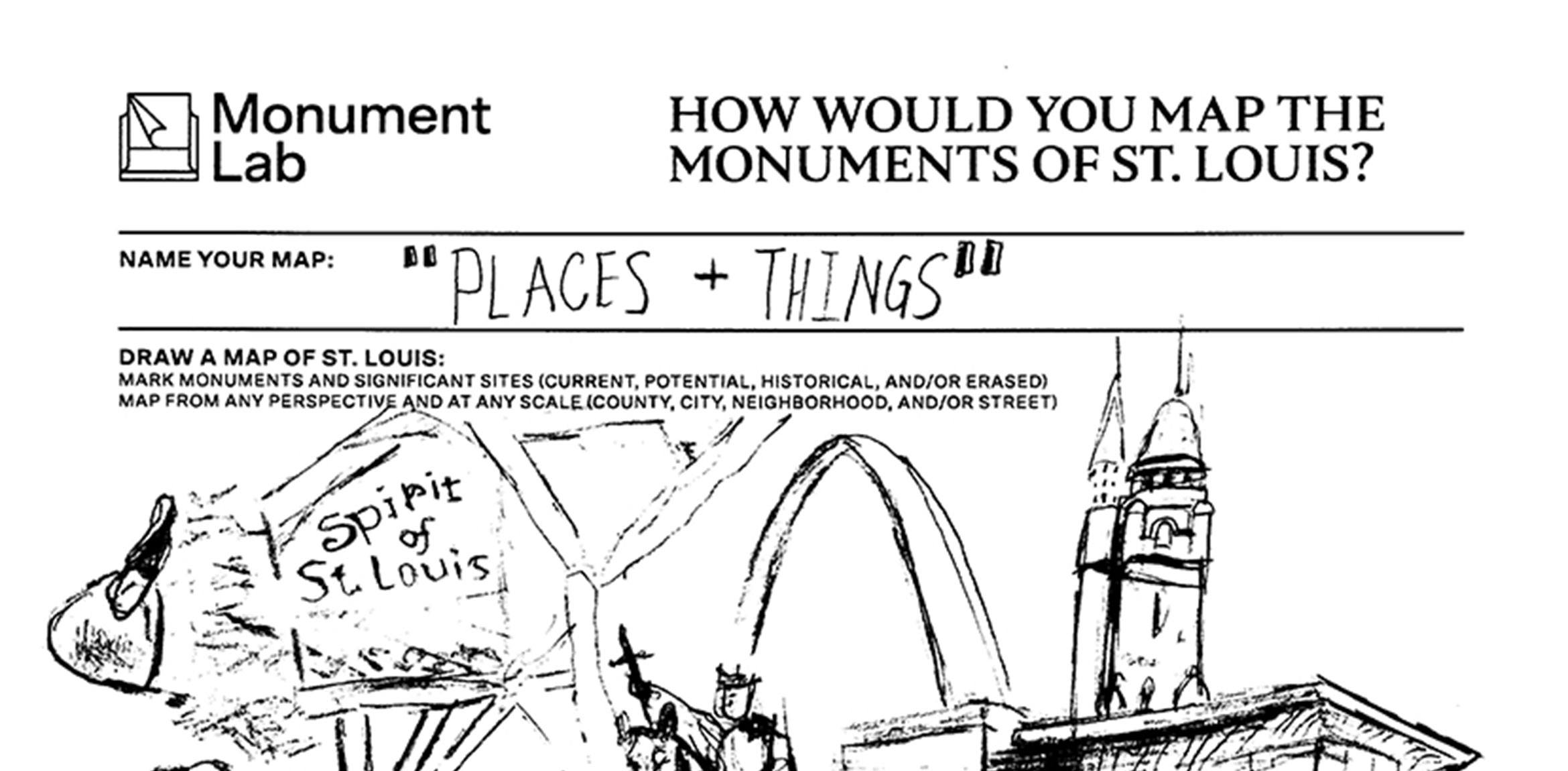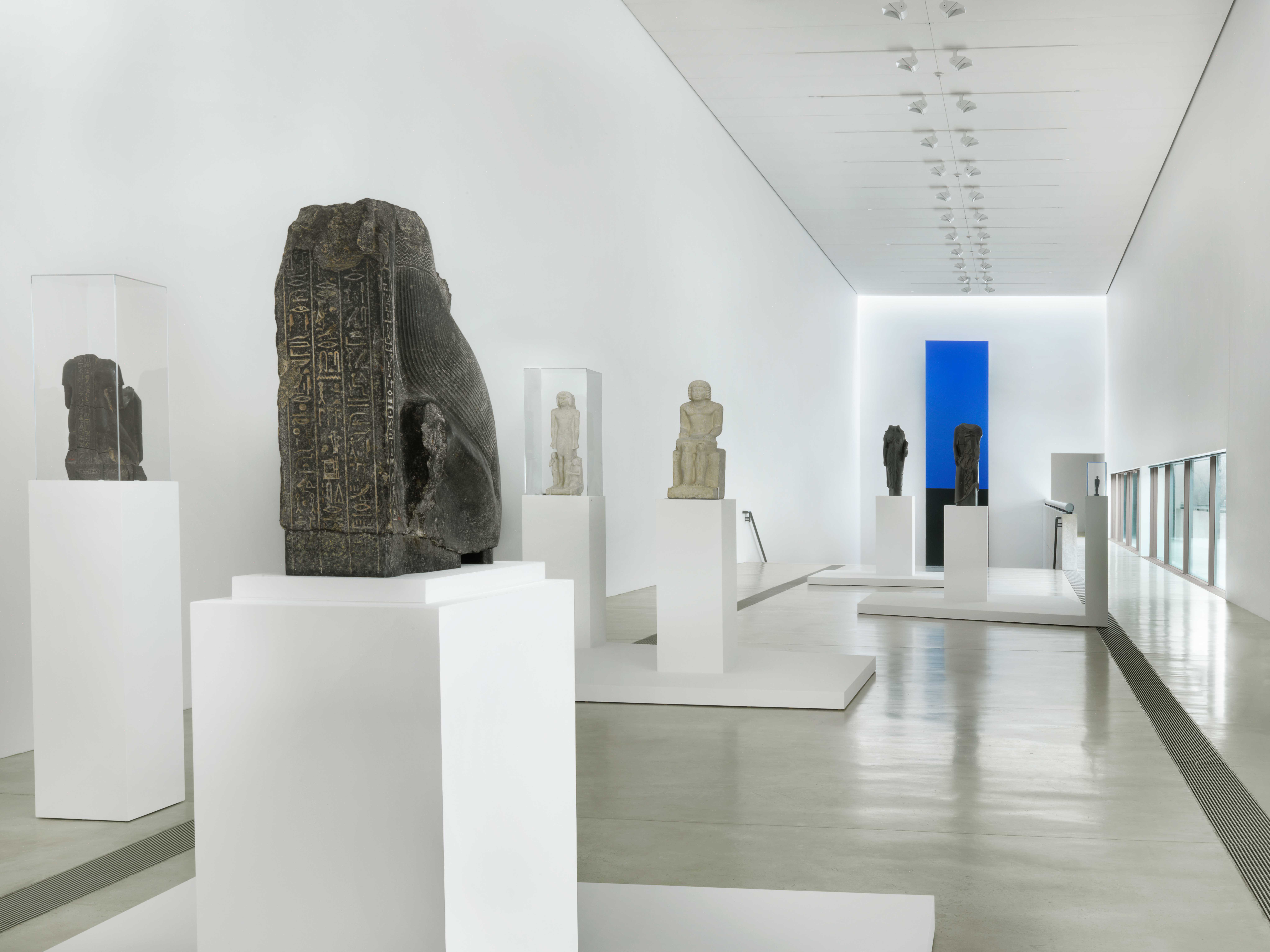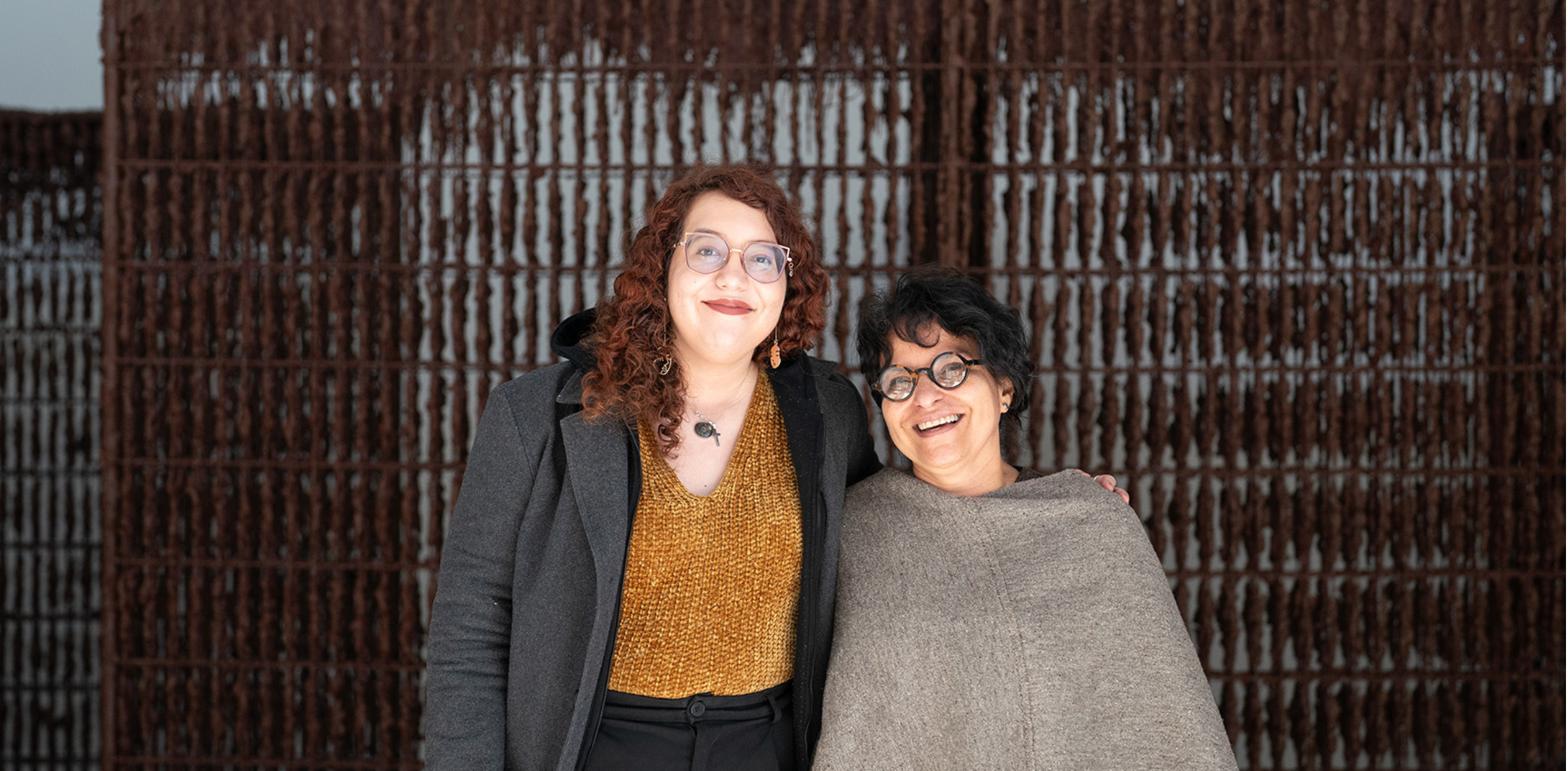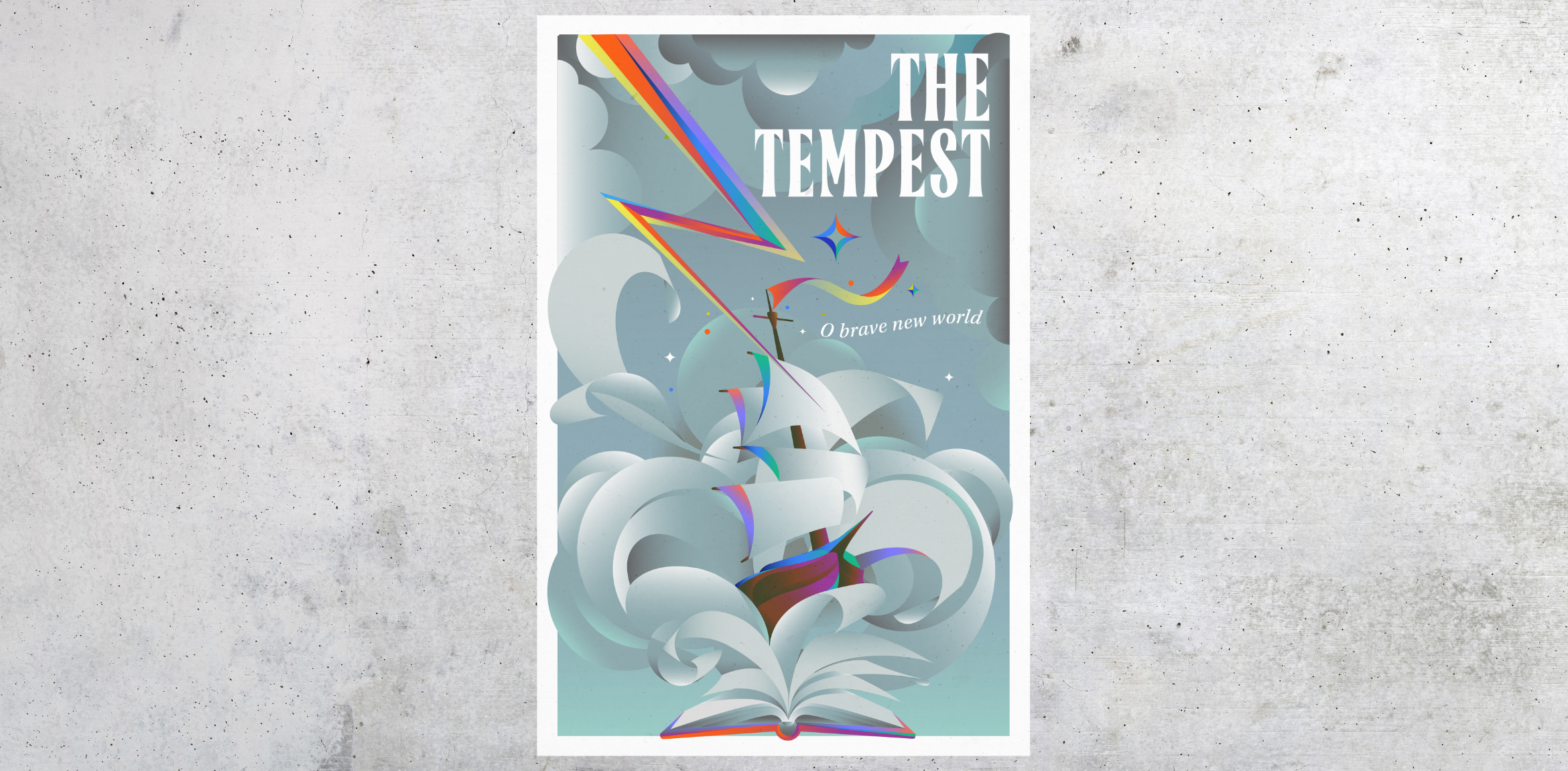In collaboration with the Philadelphia-based Monument Lab, the Pulitzer hosted a summer research residency that gathered publicly-sourced inventories of St. Louis’s symbols and sites of memory in order to explore the question: How would you map the monuments of St. Louis? The project, titled Public Iconographies, focused on both existing landmarks and monuments and aspects of the city’s current landscape that are not memorialized but are nonetheless part of the public consciousness of the city’s histories of justice and injustice, as well as equity and exclusion.
Working from a research field office at the Pulitzer, Monument Lab and a team of local researchers expanded their work into various communities through research-gathering meet-ups at cultural sites around St. Louis. Members of the public were invited to participate in the research by visiting the Pulitzer or attending a meet-up event to submit their responses in the form of a hand-drawn map. By gathering this data, the researchers built an atlas of both traditional and unofficial sites of memory, whether the monuments—sites, memories, or landmarks—be existing, potential, historical, or erased. The goal of the project was to explore the relationship between St. Louis’s residents and the city’s inherited symbols, as a means to critically explore, represent, and update the iconography of the city.
The residency culminated in the summer of 2020 with the release of a map that features Monument Lab’s findings and a series of virtual public programs.
Monument Lab is an independent public art and history studio based in Philadelphia. Founded by Paul Farber and Ken Lum, Monument Lab works with artists, students, activists, municipal agencies, and cultural institutions on exploratory approaches to public engagement and collective memory. Monument Lab cultivates and facilitates critical conversations around the past, present, and future of monuments. Their goal is to critically engage the public art we have inherited to reimagine public spaces through stories of social justice and equity. In doing so, they aim to inform and influence the processes of public art, as well as the permanent collections of cities, museums, libraries, and open data repositories.
